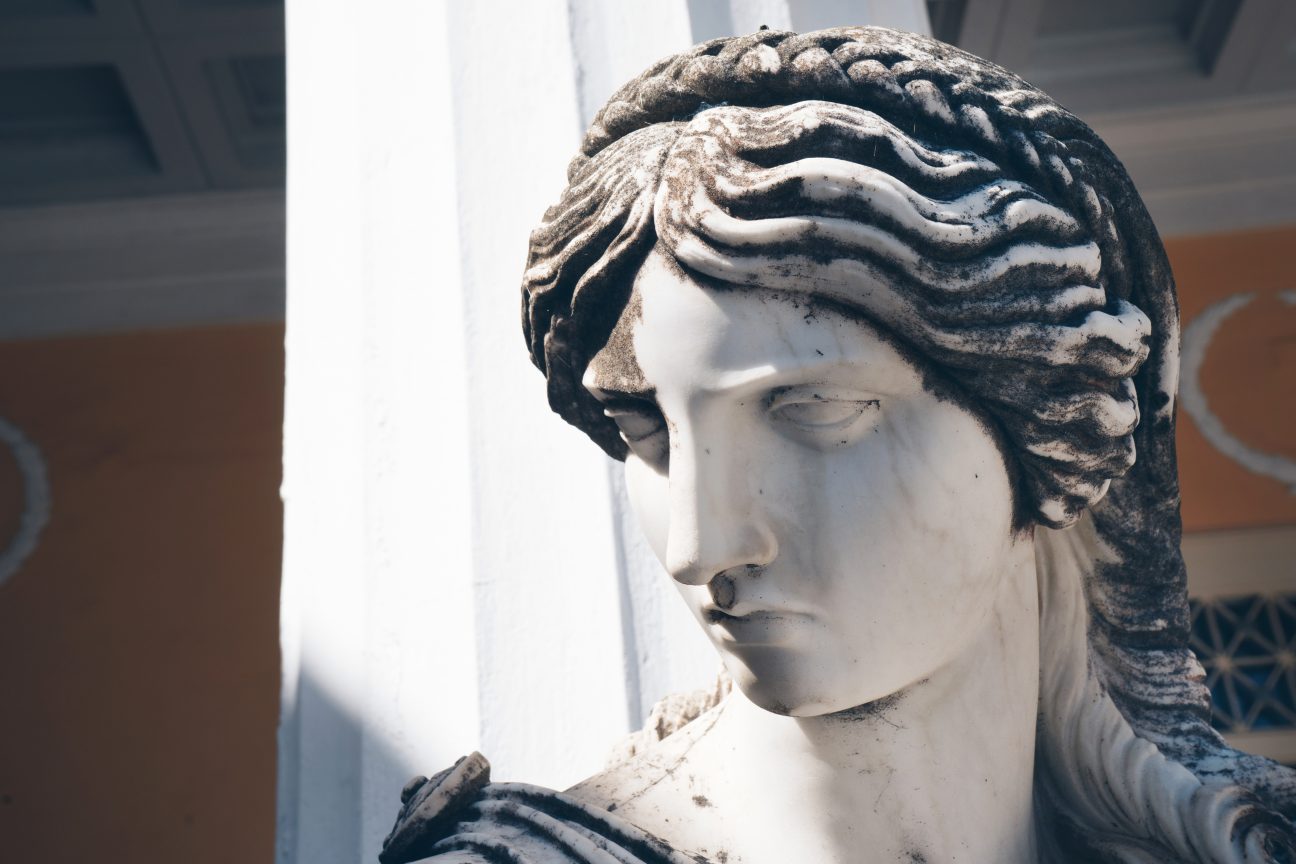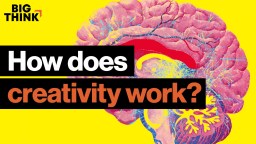How to be more creative: Psychology recommends these five habits.

- Highly creative people aren’t blessed with a unique gift.
- All people are natural innovators who bring creativity to the endeavors they undertake.
- Psychologist Scott Barry Kaufman explains how to nurture your innate creativity with these five habits.
Creative types radiate an undeniable allure. We find their skill so magical, so enticing, so sexy, that throughout history, we’ve been inclined to attribute it to extraordinary causes.
The ancient Greeks believed creativity came from the Muses, goddesses who whispered secret knowledge in men’s ears. Whom these goddesses chose to favor is what separated the great poets, historians, and musicians from their uninspired peers. Elsewhere, the Norse believed Odin could bind or unbind men’s minds using the power of the runes.
Today the stories have changed, but we still tend to view creativity as a gift reserved for the blessed. One popular belief holds that creative people’s brains are wired differently. Their imaginative right brain dominates their more analytical left. A belief that, while sounding more scientific, is as much as a myth as fickle goddesses and one-eyed rune wielders.
The reality is that creativity isn’t the exception. It’s the default. Humans are natural innovators and not only in the academic realism of the arts and sciences. We find ways to innovate prosaic endeavors such as play, work, cooking, socializing, and even housekeeping.
For this reason, psychologist Scott Barry Kaufman says teaching creativity isn’t about unlocking a special mental app. Those apps came pre-installed courtesy of your evolutionary lineage. Instead, you should focus on the habits that cultivate the ingredients of creativity: intelligence and imagination.

Keep learning
By intelligence, Kaufman doesn’t mean your raw IQ score. He defines it as the ability to comprehend information — whether through self-observation or learning from others — and retain it for later use. Imagination then draws from that information and molds it to envision what could be.
“Creativity requires our ability to know what has come before so we can stand on the shoulder of giants, but it also requires the ability to have great foresight and vision to imagine the world as it could be,” Kaufman said in an interview. “And when we combine the two, I think that makes us much more likely we’ll have creativity.”
Educationalist and historian Tim Leunig not only agrees with Kaufman but takes the idea a step further. For him, knowledge is the foundation of creativity. In his TED talk, Leunig offered the steam engine as a historic example of this principle.
Plans for the steam engine didn’t spontaneously generate inside Thomas Newcomen’s head. Precursor inventions included Thomas Savery’s steam pump and Denis Papin’s steam digester and piston. Newcomen’s creative contribution was to realize that he could combine their inventions in an original way. Toss in some imagination and engineering skills, and you get arguably the most important invention in economic history.
“Now that’s what I call creative thinking,” Leunig said. “Creative thinking based on knowledge.”
Note that Newcomen wasn’t a genius or especially gifted. He was an ironmonger by trade — a far cry from the visionary CEOs glossing magazine covers today. But through his studies, he dug a deep well of information to draw from.
Whether you call that intelligence or knowledge, it was lifelong learning that provided the raw material his imagination needed to fashion something revolutionary.
Be open to new experiences
However, not all knowledge is gained through formal education or professional learning. Another way to increase your intelligence is to seek new experiences.
Kaufman notes that creative people tend to be curious, have a deep appreciation of beauty, and push themselves outside their comfort zones. To satisfy these desires, they seek novelty through reading, travel, entertainment, cuisine, hobbies, socializing — just about any aspect of their lives, really.
Like professional learning, new experiences provide a wealth of knowledge and understanding for your imagination to draw from. “Once we’re truly open to what we’re experiencing, that’s when we truly grow, and I think that’s when the most optimal creativity comes about as well,” Kaufman said.
For example, Dutch painter Vincent van Gogh was heavily inspired by Japanese woodblock paintings (called ukiyo-e). Though he never visited Japan, he grew fascinated with Japanese culture, bought prints of Japanese art, and practiced copying the techniques of masters such as Utagawa Hiroshige. By integrating these fresh experiences into his European tradition — and, again, a dash of imagination — Van Gogh in turn became one of the most influential post-impressionist painters.

Engage in play
To spur your imagination, it’s best to approach a problem or creative project with an open mind. This approach requires relaxing what physicist Leonard Mlodinow calls your “cognitive filters.”
Think of cognitive filters as the security guards of your mind. They police your ideas at the subconscious level, only letting the more conventional ones pass into your consciousness. Sometimes this is a good thing — you don’t want to get caught being too creative on your taxes. But your cognitive filters can sometimes be overly restrictive and cut you off from unconventionally creative ideas as well.
One way to ease your cognitive filters is to engage regularly in play. Play creates a sense of psychological safety in which you can express yourself, experience the unfamiliar, and just plain get weird. Because you don’t have to worry about failure or what others think of you — it’s not play if you do — that safety provides tacit permission to try new things and exercise your imaginative muscles.
If you can bring that sense of play to your work or creative craft, all the better.
Embrace solitude
Another way to relax your cognitive filters is to carve out moments of solitude. These moments can entail working on your craft alone or simply daydreaming — the latter of which helps your brain make unusual associations. Either way, the time should be distraction-free and long enough to let your imagination work.
Programmer John Carmack’s early success shows the value of this habit. In the late 1990s, Carmack was trying to develop a breakthrough video game engine to follow the success (and infamy) of the Doom series. But thanks to a burgeoning company, id Software, he found his time for private work dwindling.
To compensate, he began shifting the start of his workday an hour at a time. Eventually, he was working from evening to dawn just to maintain his solitude. The fruit of his labor was the Quake engine, and the first game to use it, Quake, went on to be a mega-hit.
Now, Carmack’s example doesn’t mean creativity eschews collaboration altogether. Working with others is also an important part of the imaginative process. Graphic artists like Michael Abrash were also vital to id Software’s success. But for your disparate ideas, daydreams, intelligences, and imaginings to coalesce into a creative whole, you need time alone to work it out.
Creativity requires our ability to know what has come before so we can stand on the shoulder of giants, but it also requires the ability to have great foresight and vision to imagine the world as it could be.
Scott Barry Kaufman
Creativity is hard work
There is one more habit to help bring intelligence and imagination together: dedication and hard work. And this habit is one reason why so many attribute creativity to extraordinary causes.
As the late writer Ursula K. Le Guin explains: “If you haven’t learned how to do something, the people who have may seem to be magicians, possessors of mysterious secrets. […] But in any complex art, such as housekeeping, piano-playing, clothes-making, or story-writing, there are so many techniques, skills, choices of method, so many variables, so many ‘secrets,’ some teachable and some not, that you can learn them only by methodical, repeated, long-continued practice — in other words, by work.”
Work is one reason that Kaufman, Le Guin, and other experts focus on the habits of creativity over the goals. Whatever your creative goals are, they won’t be achieved by waiting for a deity to finally take notice of your needs. But by cultivating the habits that build your intelligence and give your imagination space to flex, you can take the daily steps that build toward something new. And it’s those small contributions that make creativity a richer part of your life.
Learn more on Big Think+
With a diverse library of lessons from the world’s biggest thinkers, Big Think+ helps businesses get smarter, faster. To access Scott Barry Kaufman’s expert class for your organization, request a demo.





